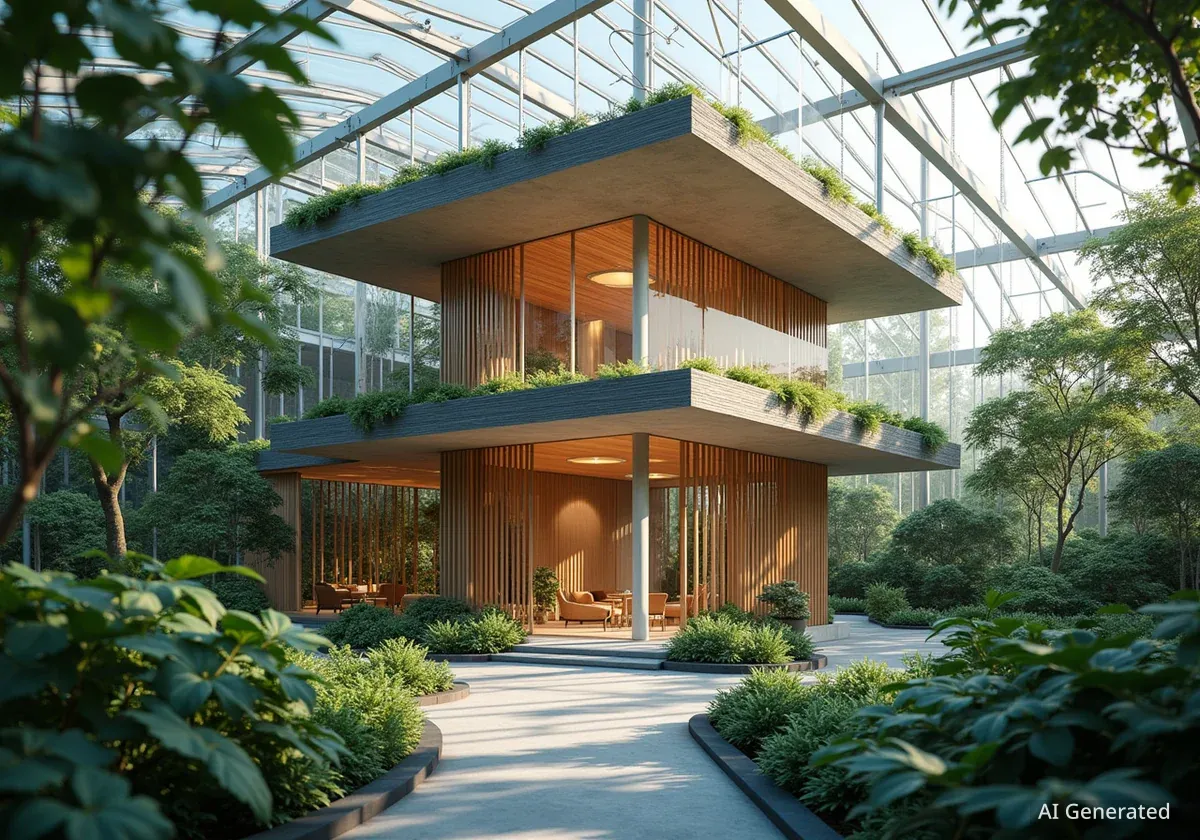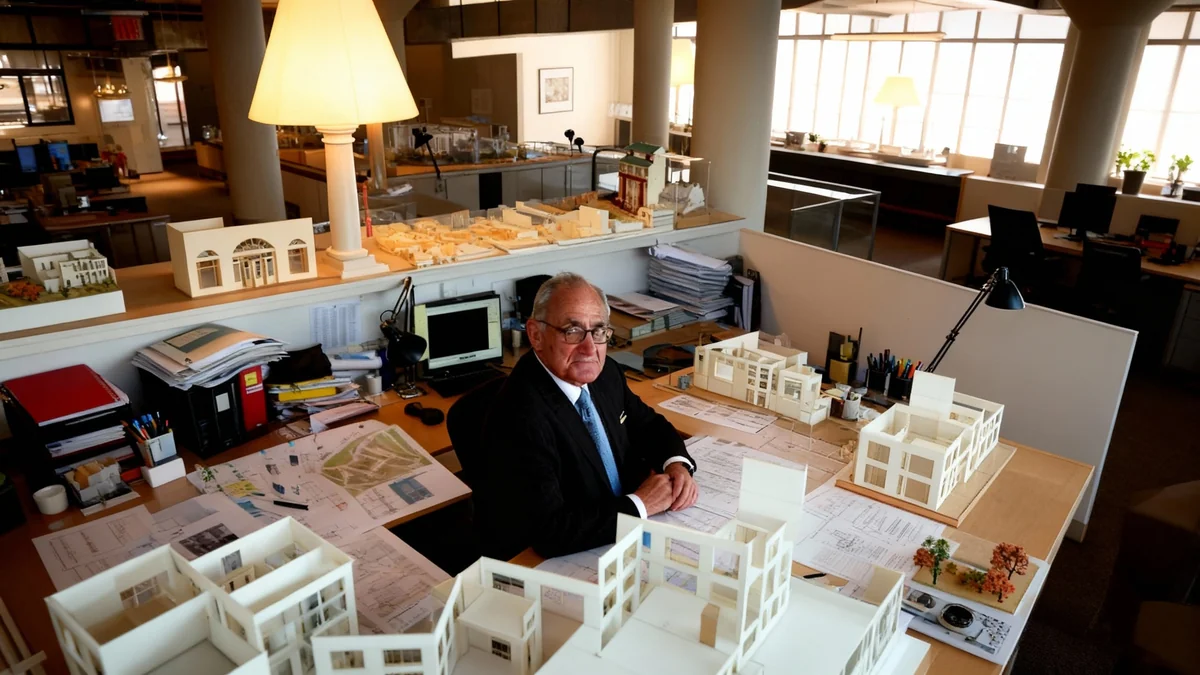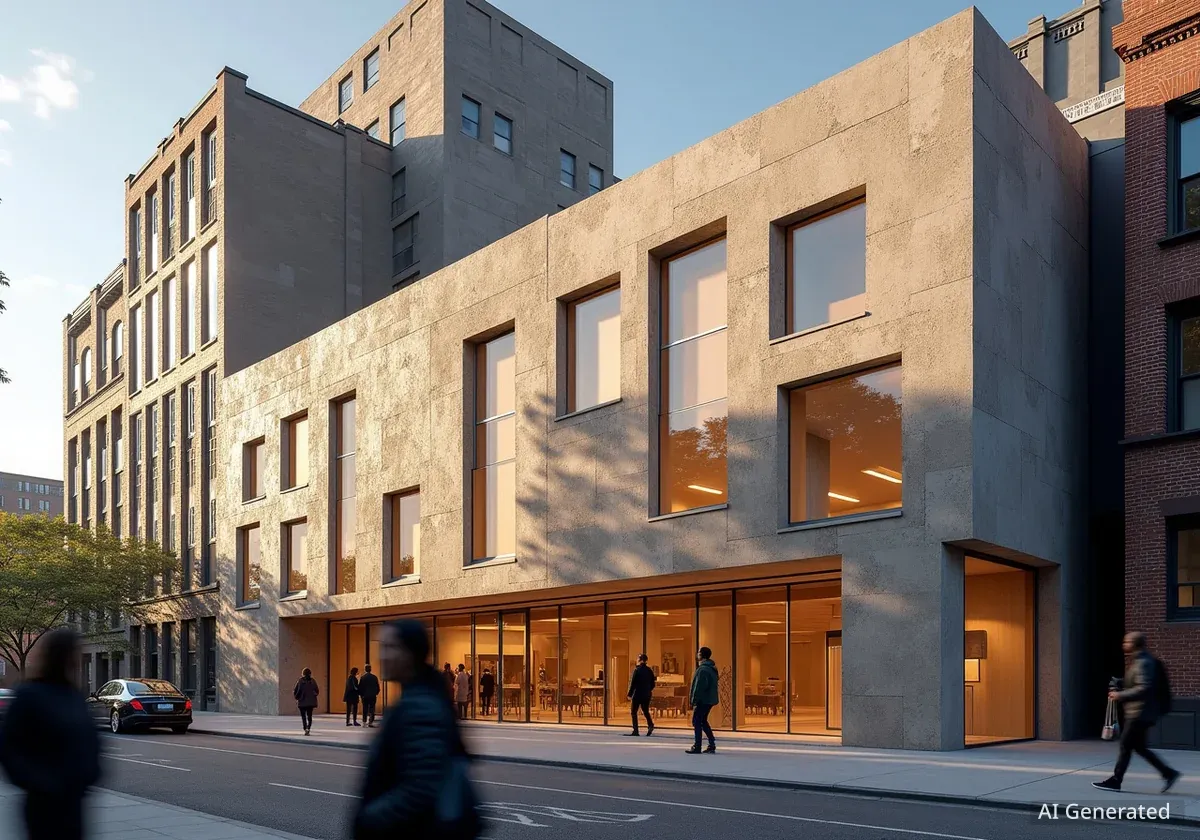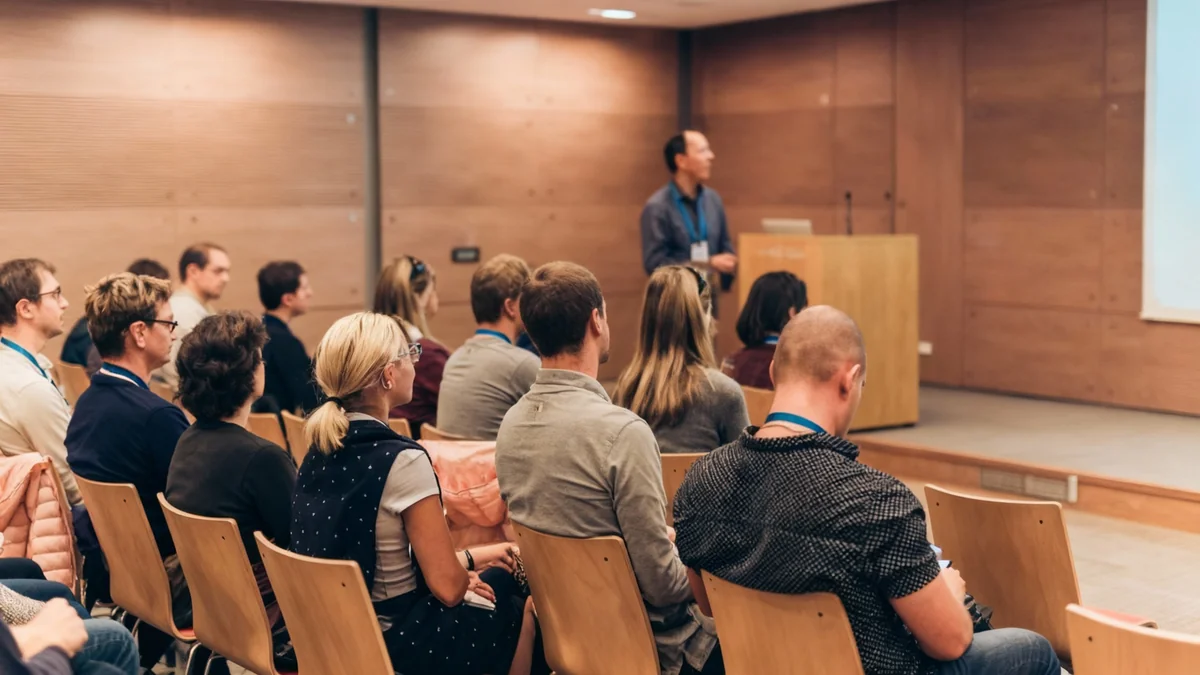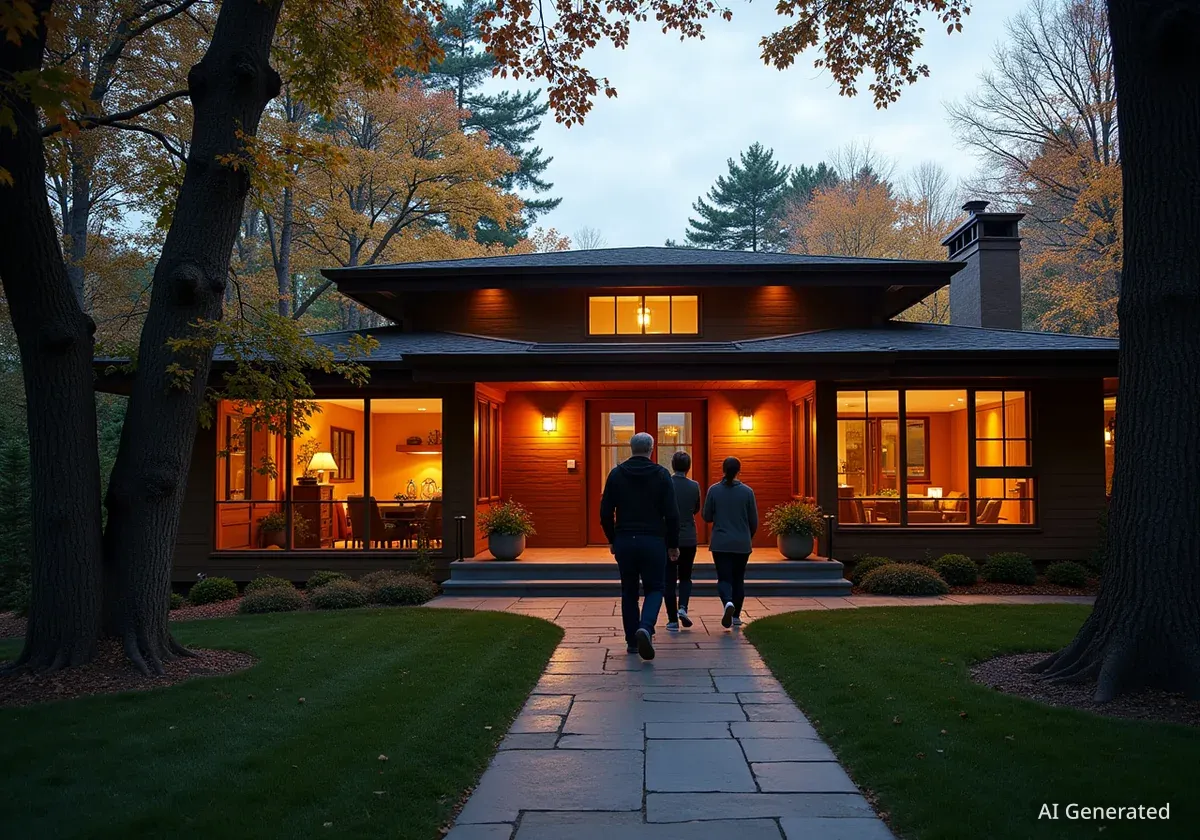Atelier Guo, a Shanghai-based design firm, has transformed a disused greenhouse in Huizhou, China, into a unique two-story structure known as the Moon Pavilion. This project, completed in collaboration with artists Meilin Gao and Gang Xu, reimagines an ancient Chinese poem into a physical space. The design focuses on the moon as a central theme, integrating it into the pavilion's visual and conceptual elements.
The pavilion stands over water, reflecting its surroundings. Its curved shape is intended to evoke the slow rise of the moon. The project also emphasizes sustainable practices, including the reuse of materials from the original greenhouse structure.
Key Takeaways
- Atelier Guo converted an abandoned greenhouse in Huizhou, China, into the Moon Pavilion.
- The design is inspired by an ancient Chinese poem and features the moon as a central theme.
- Artists Meilin Gao and Gang Xu collaborated on the project.
- Material reuse and sustainable practices were key elements of the construction.
- The pavilion's structure and cladding are designed to interact with light and water.
Concept and Lunar Inspiration
The core idea behind the Moon Pavilion comes from an old Chinese verse. This verse describes a poet finding joy and intoxication among flowers. Atelier Guo aimed to translate this literary image into a tangible, spatial experience for visitors.
The moon is a significant motif in the design. One side of the pavilion features a special art installation that can rotate. This installation is designed to look like a shifting, reflective moon, acting as an artificial counterpart to the natural moon in the sky. From a distance, both the real moon and this installation appear to shimmer over the pond that surrounds the pavilion.
As people walk around the water's edge, the pavilion's distinct curved outline is meant to remind them of the moon ascending over the horizon. This creates a continuous visual and emotional connection to the lunar theme.
"The lunar element is central to the concept and the physical composition of the pavilion," stated a representative from Atelier Guo. "We wanted to create a space that evokes the serene beauty described in ancient poetry, allowing visitors to experience it visually and emotionally."
Sustainable Material Reuse
The project began with Atelier Guo's decision to reinterpret the existing greenhouse. The original structure had a lightweight frame made from materials typically used in agricultural construction. While the old greenhouse was taken apart, its design language was not lost.
The new pavilion incorporates elements from the old structure, such as its temporary assembly style, flat roof layers, and arched middle section. The translucent polycarbonate cladding of the original greenhouse was also reimagined. The new design creates a more permanent, yet still permeable, structure.
Project Facts
- Location: Huizhou, Guangdong, China
- Area: 120 square meters
- Principal Architect: Liaohui Guo
- Artists: Meilin Gao, Gang Xu
- Key Materials: Repurposed steel, polycarbonate, carbon-curing boards
Artist Gang Xu played a crucial role in extending the logic of reuse. Steel parts from the old greenhouse were repurposed and refashioned into stool legs for the pavilion's interior. The surfaces of these stools were created using compressed waste materials, further highlighting the commitment to sustainability.
For the upper floor, the designers used carbon-curing boards. This choice reflects an ongoing interest in sustainable materials and the idea of giving materials a new life after their initial use. According to the design team, this approach minimizes waste and reduces the environmental impact of the construction.
Structure and Form
The second-floor concrete slab in the pavilion serves as a raised terrain. This design choice was inspired by the seasonal practice in some regions of lifting boats during the dry season. The slab is supported by a dense, irregular arrangement of steel columns. These columns are strategically placed to conceal mechanical systems within the structure.
The geometry of the concrete slab resembles the hull of a vessel, reinforcing the idea of a floating or elevated form. Above this, the roof truss rises higher than that of the original greenhouse. This increased height improves the lateral stability of the structure. It also amplifies the impression that the pavilion is a boat poised to drift, connecting it further to its watery surroundings.
Integration with Nature and Light
Even though the physical greenhouse structure was removed, its spirit of cultivation remains central to the Moon Pavilion. Atelier Guo ensured this continuity by incorporating a planted gradient around the building. This gradient features shade-tolerant plant species that grow beneath the slab, while native vegetation spreads out beyond the pavilion's immediate perimeter.
This natural planting helps to dissolve the architectural boundaries, blending the structure seamlessly into its environment. From a distance, the dark polycarbonate cladding of the Moon Pavilion gives it a distinctive appearance, much like a pair of sunglasses. This choice of cladding references the agricultural context of the site, where sun protection is important.
Architectural Context
Huizhou, located in Guangdong province, China, is known for its natural landscapes and historical significance. The transformation of an agricultural greenhouse into a cultural pavilion reflects a growing trend in adaptive reuse, where existing structures are given new purposes, often with a focus on sustainability and community engagement. This project contributes to the region's cultural infrastructure while demonstrating innovative design principles.
The dark cladding also serves another purpose: it amplifies the luminosity of the moon installation by creating a strong contrast. The tinted skin allows glimpses of the steel framework beneath, revealing the structural hierarchy of the building. This transparency adds another layer of visual interest to the design.
Working with sustainability consultants from Atelier Li Yin, the design team integrated several passive systems to maintain comfort inside the pavilion. These include passive ventilation, shading elements, and mechanical misting systems. These features work together to ensure a comfortable internal temperature through natural airflow, reducing the need for extensive artificial cooling or heating.
- The pavilion's design uses natural light effectively.
- The dark cladding enhances the moon installation's glow.
- Passive ventilation systems maintain internal comfort.
- Native plants are integrated into the landscape.
The Moon Pavilion demonstrates a thoughtful approach to architecture, combining artistic vision with practical sustainability. It stands as a new cultural landmark in Huizhou, offering a unique blend of poetry, design, and environmental consciousness.
